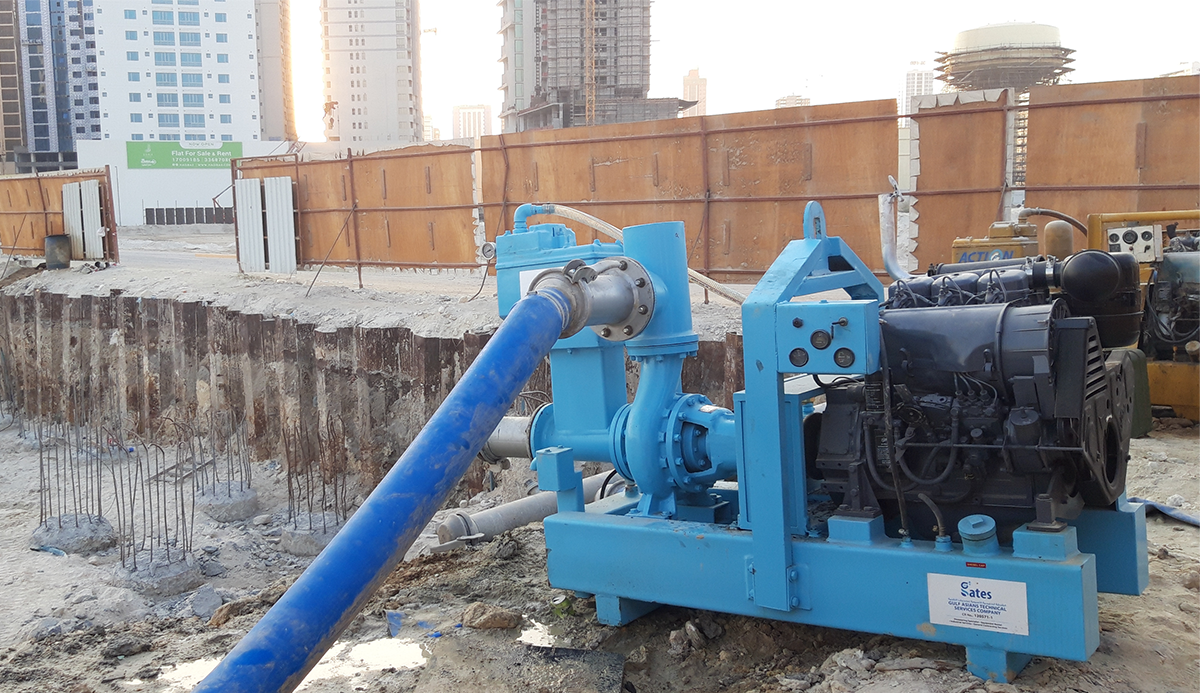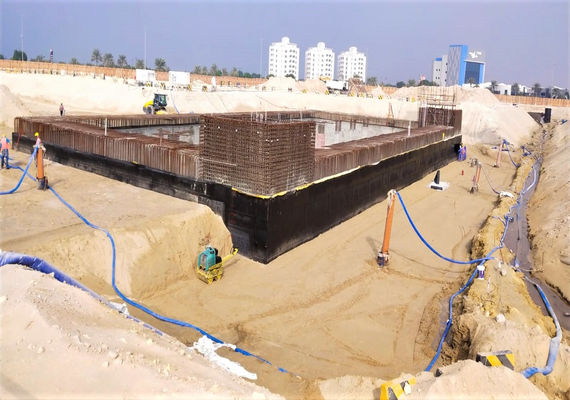

Dewatering and water management are essential aspects of many construction or quarry operations. Gates takes a planned and integrated approach towards water management, incorporating the overall construction development strategy, operational requirements and environmental considerations.
The most common types of groundwater control by pumping are – in order of sophistication:
There are also some less commonly used dewatering techniques, such as eductor wells, electro-osmosis, horizontal wellpoints and relief wells.

Sump pumping is the simplest form of groundwater control by pumping (i.e. dewatering). In its basic form it involves allowing groundwater to seep into the excavation, and directing the groundwater to localized low points (called sumps) in the excavation. Water collects in these sumps, which are equipped with ‘sump pumps’ – robust pumps with the capacity to handle some solids in the water. Water is then pumped away (perhaps requiring some treatment to remove suspended solids prior to discharge at the ultimate disposal point). Sump pumping is widely used in construction dewatering and mine dewatering (where it is often called in-pit pumping).
Sump pumping can be used for two separate purposes, though the form of a sump pumping system may be similar for either requirement, and a single sump pumping system can meet both requirements in some cases:
For Surface Water Control: To collect and remove surface water run-off within the excavation, the water being channeled to sumps by means of collector ditches or channels.

For Ground Water Control: To collect and remove groundwater seeping into the excavation through the base and slide slopes, the water being channeled to sumps by means of collector ditches or channels.

Wellpoint dewatering is widely used for excavations of shallow depths, especially for pipeline trench excavations. In appropriate ground conditions a wellpoint system can be installed speedily and made operational rapidly. A typical wellpoint system con sists of a series of small diameters wells (known as wellpoints) connected via a header pipe, to the suction side of a suitable wellpoint pump. The pump creates a vacuum in the header pipe, drawing water up out of the ground. For long pipeline trenches, horizontal wellpoints may be installed by special trenching machines. disposal point). Sump pumping is widely used in construction dewatering and mine dewatering (where it is often called in-pit pumping).
Wellpoints are typically installed in lines or rings around the excavation, and are pumped by diesel or electrically powered pumps, with associated header mains, water discharge pipes, power supply generators, electrical controls and monitoring systems.
GATES provides complete wellpoint dewatering solutions:
A deep well system consists of an array of bored wells pumped by submersible pumps. Pumping from each well lowers the groundwater level and creates a cone of depression or drawdown around itself. Several wells acting in combination can lower groundwater level over a wide area beneath an excavation. Because the technique does not operate on a suction principle, large drawdowns can be achieved, limited only by the depth of the wells, and the hydrogeological conditions.
The wells are generally sited just outside the area of proposed excavation, and are pumped by electric submersible pumps near the base of each well. Water collection pipes, power supply generators, electrical controls and monitoring systems are located at the surface.
GATES provides complete deep well dewatering solutions:
